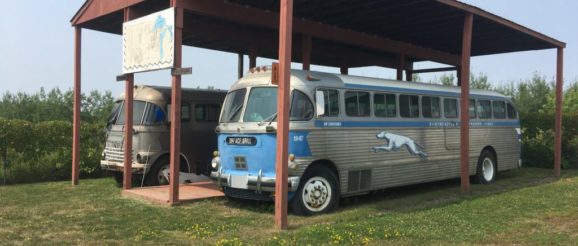By Dave Millhouser
Gene Nicolelli Sr. liked buses okay, but he loved what they did for Hibbing, Minn., his beloved hometown and the birthplace of motorcoach transportation in North America.
From Aug. 10-12, some 200 locals, enthusiasts and industry veterans came together to honor Nicolelli’s devotion to his city and celebrate the rich history of the bus industry’s huge contribution to the growth of the United States.
Twenty years after it was established in 1893 as a logging town, massive deposits of iron ore were discovered under Hibbing. In order to mine them, the town fathers decided to literally move the city. Many of the existing buildings were transported the several miles to nearby Alice, Minn. Locals were then confronted with the problem of getting from their new jobs back to their former homes.
Enter Carl Wickham, a car salesman. Wickham couldn’t peddle a seven-passenger Hupmobile, so he and Andy “Bus Andy” Anderson used it to start a bus service carrying miners from Alice to Hibbing. A year or so later they joined Ralph Bogan, and formed Mesaba Transportation Company, which ultimately became Greyhound Lines.
Nicolelli, Hibbing’s longest-serving city councilman, already legendary for his devotion to virtually any cause that benefited the city, stumbled upon all this history. He understood that without buses, Hibbing wouldn’t have been able to thrive and make the enormous contribution it did to the growth of American industry and winning two World Wars.
After years of promoting the idea, he in 1989 started the Greyhound Bus Origin Center. A talented artist/craftsman, Nicolelli literally built many of the displays.
The museum’s diverse fleet ranges from a Hupmobile similar to the first Greyhound, through pre- and post-WWII models, to coaches from the 1970s and ’80s, along with an extensive collection of vintage memorabilia and photographs. There is a re-creation of a shop building coaches, a bus station and a small bus garage.
When Gene passed away in 2014, his long-time friend, Jon Beckstrom, took over as operations manager. This year he teamed with Stan Holter and Ross Gabrick of busboyscollection.org to put together a tribute to Nicolelli, Hibbings and the bus industry. Several representatives of the Museum of Bus Transportation helped with logistics.
The Origin Center’s fleet of more than 15 historic coaches was supplemented by over 20 visiting buses. Mixed in with folks re-living careers in the business were families with children who reveled in seeing the buses, sitting in the driver’s seats and playing with several interactive displays. One trucker walked over from his parked rig to reminisce fondly about his Greyhound driving career that had spanned several decades. Other veterans had emotional reunions with bus models they hadn’t seen in years, and remembered affectionately.

The highlight for many was riding antique coaches (1970s MCIs to accommodate the large groups) along the route that literally began the American coach industry. Starting atop an overlook of the massive open pit mine at Hibbing’s original location, the coach passed the museum and ended up at the Alice terminus of America’s first bus route. Across the street was a firehouse that had witnessed the Hupmobile’s arrival in 1914.
Sunday included a lunch honoring Gene Nicolelli Sr. and featuring his son Gene Jr., representatives of the Busboys Collection and a parade of 17 antique buses through Hibbing.
The Greyhound Bus Origin Center is located at 1201 Greyhound Boulevard and open from mid-May through September; .

